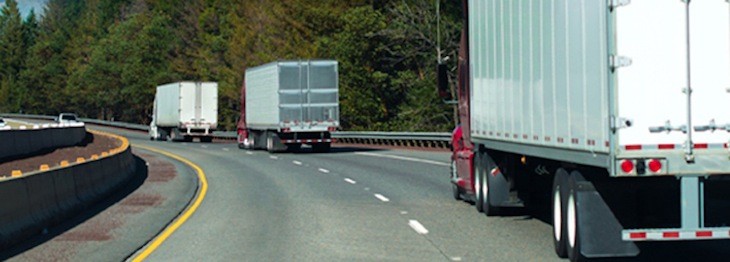ATA forecasts bright outlook for transportation sector, makes recession prediction
by July 20, 2017 10:27 am 719 views

The outlook is good for the U.S. transportation sector, with freight volumes to rise almost 3% in 2017, said American Trucking Associations Chief Economist Bob Costello.
On Wednesday (July 19), the trade organization released its Freight Transportation Forecast, projecting freight volumes and transportation industry trends through 2028. Costello said he’s worked at the ATA for 20 years, and the ATA has produced this report for at least that long with the help of industry analyst IHS Markit. Costello spoke about the report in a conference call Wednesday.
The report looks at all modes of transportation: air, pipeline, rail, truck and water. It takes into account the primary shipment mode, and because of this, trucking freight volumes might be underrepresented, Costello said. It doesn’t factor in the secondary movements, such as the freight that trucks haul in the first and final mile of shipments primarily shipped via other modes.
Across all transportation modes, U.S. freight volume is expected to rise 2.8% to 15.18 billion tons in 2017. Through 2028, the volume will rise 36.6% to 20.73 billion tons. Annually, volumes should rise 3.4% through 2023. Following that year, volumes are projected to increase 2.3% per year.
“The challenge is how are we going to move all this freight,” Costello said.
Broken down by mode of transportation, truck volumes are expected to rise 3% to 10.73 billion tons. Between 2017 and 2028, the volume will increase 29% to 13.91 billion tons. Rail intermodal will increase 3.4% to 193.5 million tons in 2017. Through 2028, the volume will rise 47% to 286.1 million tons.
“Major trucking companies will undoubtedly increase their use of rail intermodal services as the economy builds up a head of steam, hours-of-service regulations limit individual driver ability, and driver shortages continue to be problematic,” according to the report. “We continue to expect larger well-financed for-hire carriers — both truckload and LTL — to get bigger as they absorb the traffic of those carriers who fall by the wayside in what will become an even more competitive freight-hauling environment, and merge as a way of entering new markets, warding off competition, obtaining existing driver talent and reducing operating costs.”
Between 2023 and 2028, pipeline and rail intermodal are the only segments of the transportation sector that will see a market share increase. Pipeline, with the largest rise, will transport 3.62 billion tons, or 17.5% of all freight by 2028, up from 1.52 billion tons, or 10.3% in 2017. Rail intermodal share will rise to 1.4%, from 1.3%. Market share for trucks will decline to 67.2% by 2028, from 70.7% in 2017.
Cooperation between trucking and rail industries is expected to increase the use of intermodal, the report shows.
“Foreign trade remains the driving force behind rail intermodal traffic, and the prospects for U.S. imports, despite policy uncertainties, remain bright.”
Across all modes of transportation, total revenue will rise 6.2% to $900.6 billion in 2017. Through 2028, revenue will jump 78% to $1.6 trillion. For the trucking industry, total revenue will rise 6.4% to $719.2 billion in 2017. Through 2028, revenue will increase to 73% to $1.24 trillion. For rail intermodal, revenue will rise 7.2% to $20.5 billion in 2017. Through 2028, revenue will increase 83% to $37.7 billion. Pipeline will have the largest rate of revenue growth, rising 191% between 2017 and 2028.
The report also projects GDP, which is expected to rise 2.4% in 2017 and 2.6% in 2018. Between 2019 and 2023, it will rise 2.2%, and between 2024 and 2028, it will increase 1.9%. When asked about the slower GDP growth after 2018, Costello said the United States will have a mature economy that’s expected to grow, but “by 2028, I think it’s safe to say we’re going to have a recession.”
Sales of class 8 trucks, which includes the tractors of a tractor-trailer, are expected to decline 3% to 186,003 units in 2017. Average annual sales are expected to rise 38% to 257,567 by 2024.
“In 2014-2015, class 8 trucks experienced an unusually strong sales cycle, selling 19% and 13% more trucks in each of those years than in the previous ones,” according to the report.
